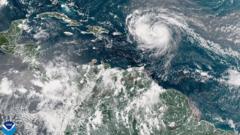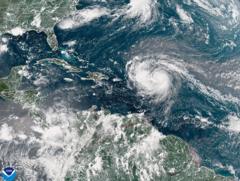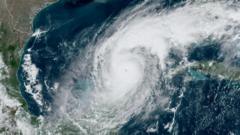The Department of Defense has announced a temporary extension for the availability of satellite data critical for hurricane monitoring, now set to remain accessible until July 31. This decision comes after an original plan to halt access by June 30, prompted by concerns over cybersecurity.
The National Oceanic and Atmospheric Administration (NOAA) previously informed that the data, obtained from three satellites jointly operated by NOAA and the Defense Department, would no longer be available for researchers and forecasters. The announcement included vague explanations of “recent service changes” without much elaboration.
A recent statement from NOAA attributed the earlier cancellation to a “significant cybersecurity risk." The one-month extension was reportedly influenced by a request from a NASA scientist, a move which illustrates the unexpected nature of the Department of Defense's initial decision.
Meteorologists and climate scientists expressed confusion over the termination of such vital data access, warning that it would have dire consequences for hurricane forecasting accuracy, consequently endangering lives and properties in the U.S. and beyond. Michael Lowry, a hurricane expert with a background in the National Hurricane Center and FEMA, pointed out that the extension, while appreciated, still falls short of covering the critical months of August, September, and October, when the highest frequency of intense hurricanes typically occurs.
Additionally, the cancellation of these satellite data services would severely impact scientific research focused on sea ice changes in polar regions dating back to the 1970s. Sharon Stammerjohn, a climate expert from the University of Colorado Boulder, emphasized the importance of continuous satellite imagery to monitor seasonal sea ice fluctuations critical for understanding our planet's climate systems.
There are alternative satellites from agencies like the European Space Agency and the Japan Aerospace Exploration Agency that might offer some data, but discrepancies in calibrations and resolutions pose challenges for researchers. As the season heats up, the demand for accurate forecasting and analysis of hurricanes and climate change remains critical.




















